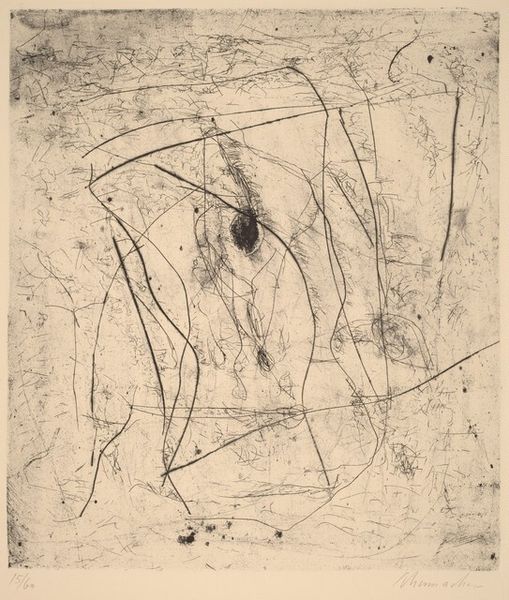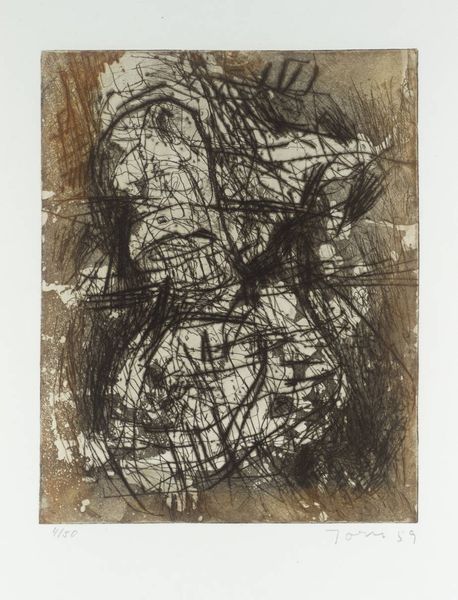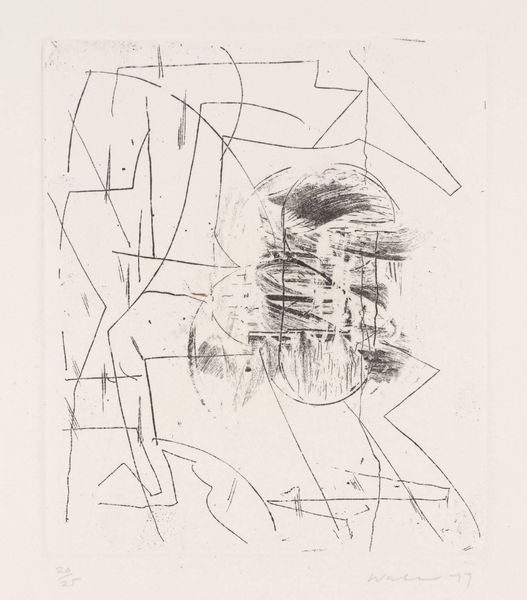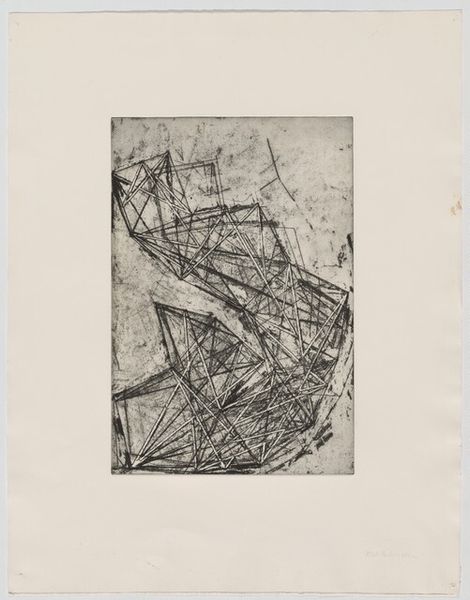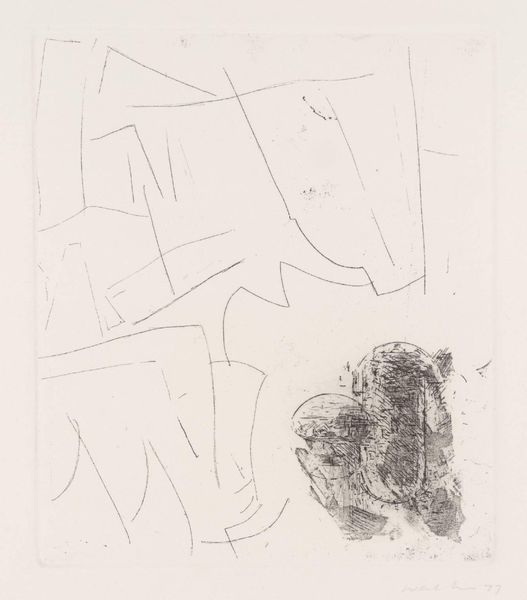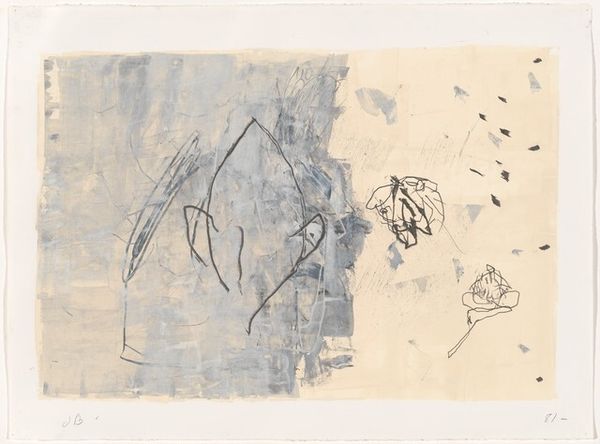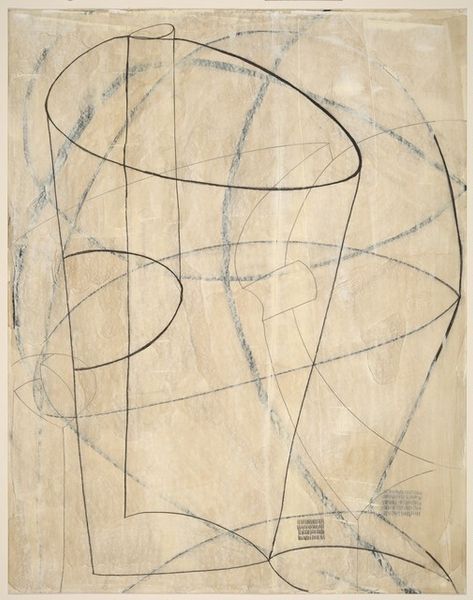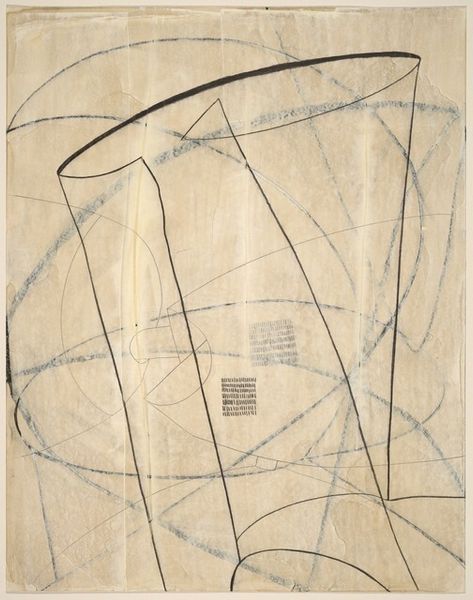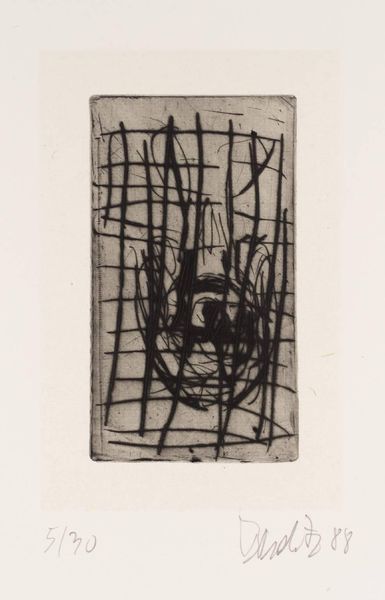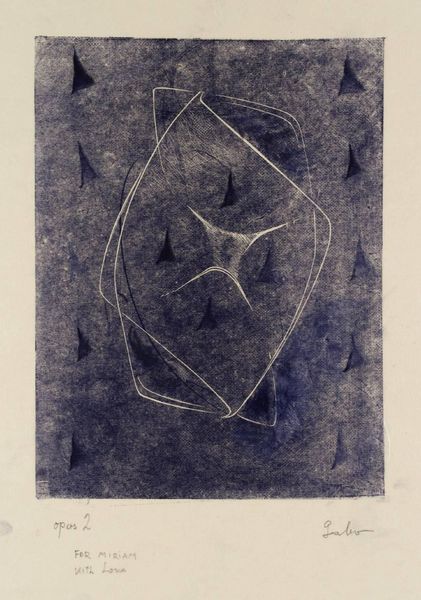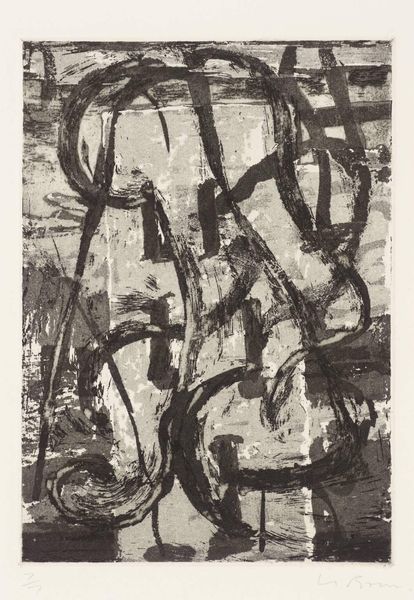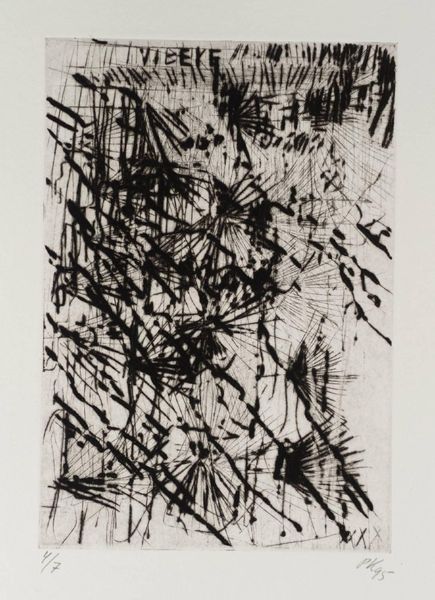
Dimensions: image: 348 x 305 mm
Copyright: © DACS, 2014 | CC-BY-NC-ND 4.0 DEED, Photo: Tate
Curator: Emil Schumacher's 3/1959, housed at the Tate, is a powerful etching. The stark monochrome immediately conveys a sense of starkness. Editor: My first impression is that it feels like an unraveling—the lines almost like threads pulled loose from a larger fabric. A sense of chaotic energy. Curator: Schumacher, working post-World War II, expressed anxieties about social structures through abstraction. The frantic lines could reflect the fracturing of societal norms. Editor: I see that too, but there's also something primal here. The marks evoke cave paintings, a return to fundamental modes of expression before language and societal structures. Curator: Interesting point. Considering Germany's complex relationship with its past, this could also be a deliberate rejection of traditional artistic languages in favor of something raw. Editor: Yes, the "eye" symbol near the center seems to fixate with its gaze, evoking both the past and the future. Curator: A haunting piece that continues to speak to the lingering effects of historical trauma. Editor: Indeed, a potent image that resonates across time.
Comments
Join the conversation
Join millions of artists and users on Artera today and experience the ultimate creative platform.
tate 8 months ago
⋮
Describing the development of Composition, Schumacher has said that the first line was purely instinctive, while each subsequent line was determined by the emerging pattern. He regarded making works such as these as a gradual process of discovery, which he compared to understanding a story as it unfolded. Although he acknowledged that recognisable figures could be detected within the surface of his works, Schumacher considered them to be predominantly abstract. Gallery label, August 2004
